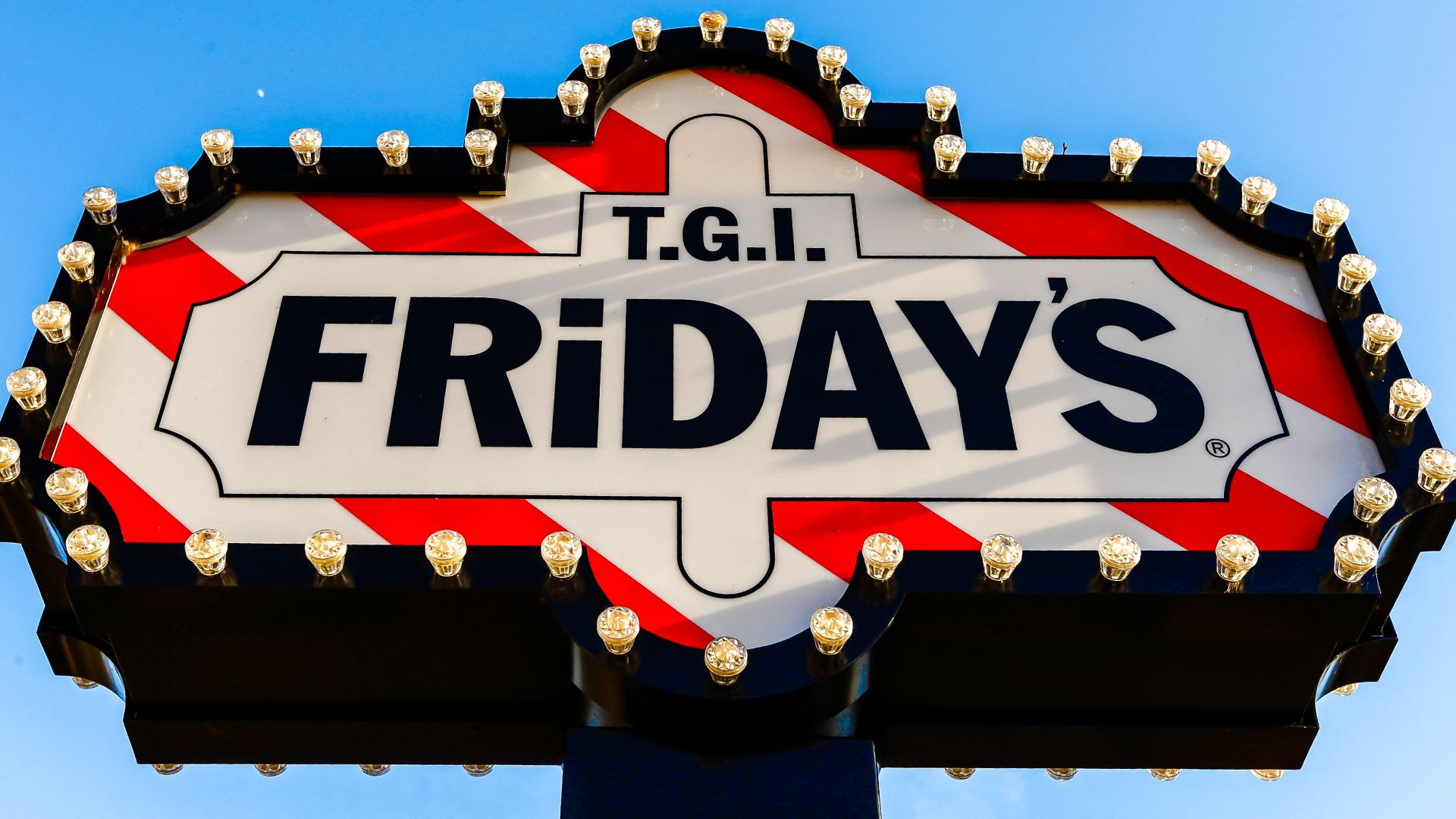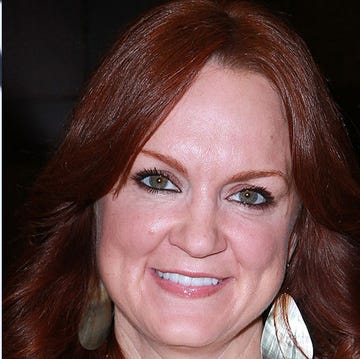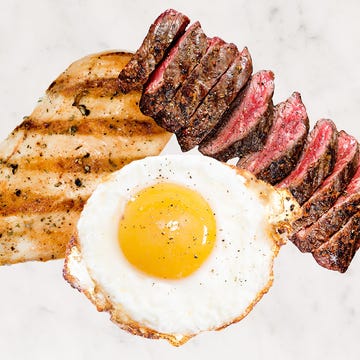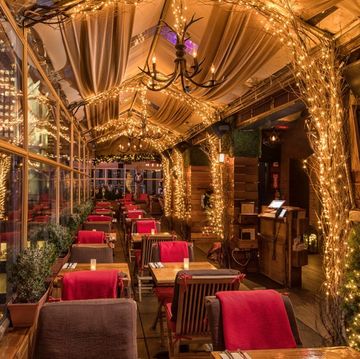On a cold January afternoon, my husband and I went on a lunch date at TGI Fridays in Methuen, Massachusetts, not 20 minutes from where I live. Three weeks earlier, the brand, which opened its first outpost in New York City in 1965, announced that it was closing 36 locations, six in my home state. The Fridays in Danvers, Massachusetts, my teenage stomping ground, was one of the new year’s casualties.
Fridays was always a place to go when there wasn’t much going on. In 1996, I was 16, living in my state’s then-smallest city, looking for excitement outside of Boston that wouldn’t cost me more than a few bucks or get me in any appreciable amount of trouble. The thing about a place like Fridays was that it delivered exactly that: a crock of reliable onion soup for a price I could afford, free dessert (if I lied about my birthday), decor that always felt earnest, and a fresh crowd that never questioned why teenagers like me would want to hang out there in the first place.
But Fridays—flair, stripes, suspenders, onion soup, and bright sugary drinks—had already, by the late '90s, departed from its own origins as a pioneering food and drink establishment. TGI Fridays now, I realized, as I scraped through a bowl of, yes, onion soup across from my husband that wintry day, is just the latest reincarnation of a brand that set the stage for the American cocktail movement and the concept of the singles bar.
Picture this: The year is 1965. Women are, regrettably, relatively unwelcome at many of Manhattan’s drinking establishments, or saloons, as they were called in the parlance of the day. Back then, the saloon was “the dominion of men, largely,” says Robert Simonson, a drinks writer for The New York Times and author of A Proper Drink: The Untold Story of How a Band of Bartenders Saved the Civilized Drinking World. A man named Alan Stillman saw a business opportunity: an untapped market serving women drinkers. (Stillman, who is still alive and who is the founder of Quality Branded, a restaurant group based in New York, declined to comment for this piece.)
“There were apparently a lot of flight attendants who lived on the Upper East Side—I’m not sure why, I guess because it was a quick commute to LaGuardia,” Simonson says. “And Stillman noticed that there was no place they could go if they wanted to go out for a drink.”
The Upper East Side TGI Fridays became one of the country’s first de facto singles bars, also sometimes referred to as “fern bars,” since they were adorned with ferns (and also ersatz Tiffany lamps and other over-the-top decor meant to extend a welcoming spirit).
It's worth mentioning that earlier that decade in 1960, the U.S. Food and Drug Administration approved the use of the first oral contraceptive, Enovid, ushering in a more permissive age of dating, particularly for single women. The arrival of this landmark drug came at the right time for a restaurant that combined conviviality and single people.
Most Americans who know the current iteration of TGI Fridays have no idea that the chain set the stage for the modern mixology movement, but people like “Magic” Mike Werner, who began working at Fridays’ Houston outpost in 1979, are happy to set the record straight. Just getting hired at the restaurant required a certain level of dedication; servers had to pass rigorous tests before even being considered for the role.
“The tests consisted of how every food item was cooked and plated and garnished,” Werner says. In order to be considered for a bartending position, servers needed to first work as a barback for a grueling nine months or longer, depending on when one of the coveted jobs opened up. “This was unlikely, because the average Fridays bartender at this Houston location took home about $300 to $500 in cash tips per shift, along with a few joints and a couple grams of coke,” he says. (According to Werner, drinks at the time cost between 75 cents and $1.25.)
Once hired, bartenders had to memorize somewhere between 300 and 400 drinks, free pour their drinks with painful accuracy, and regularly submit to testing to prove that they were up to snuff. Werner was eventually responsible for spearheading training at other locations, raising the bar, so to speak, on a profession that had been nearly obliterated as a result of both Prohibition and back-to-back World Wars. Suddenly, cocktailing was a desirable career, and Fridays—well into the 1990s—was the place to work. “It was just a workaday job,” Simonson says, a place to clock in. “But TGI Fridays introduced a different idea, that, you know, it became a sought-after profession.”
“It was the highest-paid bartending job you could get at the time,” says Philip Duff, a New York beverage consultant who worked as a bartender at several Fridays in London between 1992 and 1993. The program, Duff says, was designed to produce professional bartenders—and produce professionals it did. “You got six weeks of training. You had to memorize 468 recipes. You could maybe travel within the country, or even abroad,” Duff says. Juices, he notes, were fresh, and the brand even had herbs growing at some of its restaurants in an era that preceded any mention of “farm-to-table” or “sustainable.”
In the 1970s, Stillman sold the brand to Dan Scoggin, who then sold it to Carlson Companies, the parent company of Radisson Hotels. For a while, the change in ownership made no appreciable impact on the brand. Scoggin remained involved in day-to-day decisions until 1980 when his contract expired.
Then, in 1983, Fridays exceeded 100 locations and issued an initial public offering. “It wasn’t dramatic, overnight,” Werner says. “But once they went on the stock market: Boom, I’m not getting training support. We’ve got these commercials, and these commercials are great. They make me hungry. But, as a result, without coordinating with training, the restaurants weren’t ready.” Fridays was not prepared for the volume of customers the commercials inevitably attracted. By the time Werner finally left the brand for good in 1989 (after being fired from many Fridays along the way), he had noticed a precipitous decline in training and service.
What Werner was observing was Fridays’ shift from a singles bar to a corporate enterprise—a different kind of establishment altogether. Arriving on the heels of the film Cocktail, the 1988 blockbuster starring Tom Cruise that was loosely based on the Upper East Side Fridays where it all started, the early-'90s era of Fridays was, in some ways, the company’s last great hurrah. In the 1960s, '70s, and '80s, Fridays had been one thing, and in the '90s it was desperately trying to redefine itself as the changing era required something else of it. Saloon culture—prohibitive of single drinking women—no longer existed. But families where both parents worked outside of the home did. And so a different kind of Fridays cropped up, one where the focus was primarily on catering to families.
The company was entering a market that was already being served by brands nationwide like Applebee’s and Ruby Tuesday, and, in order to preserve its relevance—its joie de vivre, really—it had to distinguish itself as unique in an oversaturated market.
Jaime Lux worked at a Fridays in Florida for a decade, starting in 2008. “It’s always fun at Fridays,” she says, reciting the restaurant’s familiar slogan. “Flair was just a fun little basic conversation starter that we would have to wear, like a pin. We could have our own pins if we wanted to, but the majority of us had Fridays-based pins, and they would say things like, ‘It’s Always Fun at Fridays.’” Servers and bartenders often wore suspenders or the signature red-and-white stripes that were memorialized—and mocked—in the 1999 film Office Space starring Jennifer Aniston as a dispirited server.
The Office Space version of Fridays is closer to its current manifestation: a bit of a parody of itself, an inside joke for anyone who has seen the movie, a comedic interpretation of a not-so-great restaurant where you might find yourself if you don’t have anywhere else to go. The servers may or may not be in on the joke, but no one here is pretending that this is the heyday of waiting tables.
If the intent of flair (and the tack away from world-class bartending) had been to market the restaurant as exceptional and unique, that schtick quickly faded, and therein became the beginning of the end. Decha Hongthong, who worked as a server at a Fridays in 1999 in the Long Island town of Brentwood, New York, would probably agree. “Have you ever seen the movie Waiting?” he asks me. The 2005 film, starring Ryan Reynolds, takes place over the course of a single day at a very mediocre restaurant called ShenaniganZ, in which just about every horrible thing that can happen at a restaurant does. “That is TGI Fridays, like, to a tee,” Hongthong says. “Everything you see in that movie is 100 percent true.”
By the time Hongthong worked at Fridays, franchise owners had changed the dynamic of the restaurant. The food, which had adoring fans, was no longer made in-house. Werner recalls a 1970s menu so robust that it included an entire chicken, which was meant to send diners home with so many leftovers that when they opened their fridge they thought of the restaurant and immediately wanted to come back. By the late 1990s, Fridays had lost some of its culinary autonomy to cost-saving corporate cutbacks. Instead, Hongthong describes an era of premade food. “The soups came in bags,” he says. “JD sauce [Jack Daniel’s sauce] came in a bag. Mayonnaise: big tubs. Dressing was the same thing.”
Some have credited the brand with inventing the potato skin. “It’s nearly impossible to accredit any one person as the true inventor of a food item,” says Tiffany Wilburn, former senior vice president of marketing for Fridays International. “While we can’t say for certain that TGI Fridays was the first to ever create a potato skin, we do pride ourselves on having introduced potato skins to our global audience.”
But it became clear as the years wore on, that its emphasis was on neither drink nor food. By 1999, now ancient history, the brand had moved away from fresh food made in-house and toward a model that depended on premade, lower-quality items.
TGI Fridays, as a brand, is still optimistic about their future. Despite the 36 closures in 2024, there remain 650 TGI Fridays worldwide, spread across 51 countries, 250 of which are in the United States. Since the 1970s, the brand has changed ownership twice more; Sentinel Capital Partners and TriArtisan Capital Partners purchased it together in 2014, and TriArtisan Capital Partners bought out Sentinel in 2019.
Fridays says it has no plans to close additional branches, but they do concede that the bar program that once made it the paragon of mixology at the forefront of the explosion of cocktail programs in the United States no longer exists. “In the brand’s early years, we had a bar apprentice program, where bartending hopefuls would work through a series of courses and programs to eventually ‘graduate’ as a certified TGI Fridays bartender,” Wilburn says. “Our training program has evolved since then, but remains rigorous to uphold our brand standards.”
In other words, “Magic” Mike Werner’s program has been dismantled, and with it a certain version of Fridays: The fern bar, which preceded the flair-filled Fridays of my youth, RIP. The new and sanitized Fridays is undergoing another unraveling, a brand in freefall, a slow decline. But it is impossible to ignore—either in hindsight or in this moment right now—the impact that Fridays has had on American bars and dining, even as we watch it disappear, fading like McFlys in an old photograph in Back to the Future.
“I think most people, if and when they do think of TGI Fridays, they think of what it is now, which is kind of a faded, forgotten family dining destination,” Simonson says. “It was actually a very historic restaurant. It really was a pioneer and it changed a lot of things. But that’s all forgotten. And that’s in the distant past. So we’re just kind of left with the relic.” From fern bar to flair bar to corporate conglomerate, TGI Fridays is still here, still holding on—at least for now.
Timeline:
1965 - Donaldson Collection/Michael Ochs Archives/Getty Images
1966 - Courtesy of TGI Fridays
1967 - Courtesy of TGI Fridays
1986 - Johnny Green - PA Images/PA Images via Getty Images
1988 - Touchstone Pictures/Getty Images
1991 - Allison Matherly/Flickr
1999 - Getty Images, 2005 - Paula Bronstein /Getty Images
2010 - Courtesy of TGI Fridays UK
Fridays Sign - PA Images/Alamy, Fridays Interior - Courtesy of TGI Fridays, Closed Fridays Interior - Lisa McKinnon/USA Today Network, Closed Fridays Door - Richard Levine/Alamy, Alan Stillman - Joe Rudis/The Tennessean via Imagn Content Services, LLC, Fridays Staff - Courtesy of TGI Fridays, Color Photo of Fridays Staff - Courtesy of TGI Fridays, Bartender - Katja Lenz/Picture Alliance via Getty Images, Fridays Closure - Alexi Rosenfeld/Getty Images, TGI Fridays Pins - Joseph De Leo
Art Direction: Carlos Dominguez, Design: Alison Dominguez, Photo Direction: Rebecca Simpson Steele, Photo Research: Cindy Roblero, Video Producer: Marc Stauble, Video Host: Julia Smith, Animations: Vineet Sawant




























